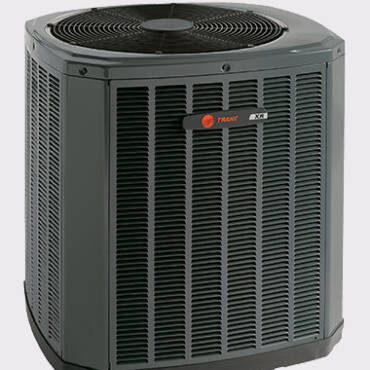When growing a residential HVAC business, determining which marketing efforts drive results is one of the biggest challenges. Without precise data, many business owners make decisions based on gut feelings rather than hard facts. A lack of accurate data often leads to wasted marketing dollars and missed opportunities. Implementing call tracking is one of the most effective ways to ensure you’re spending your marketing budget wisely. By tracking where your calls are coming from, you can double down on successful strategies and cut spending on underperforming channels. Let’s explore why call tracking is essential, how to implement it effectively, and the tools that make it easier.
Why Call Tracking Is Essential for HVAC Businesses
Most HVAC businesses rely on incoming calls for new customer inquiries, service requests, and installs. However, without proper tracking, it’s impossible to determine which marketing channels are responsible for generating these calls. Call tracking allows you to:
- Identify What’s Working: You can pinpoint which marketing efforts generate the most calls and revenue by tracking call sources.
- Optimize Your Budget: Instead of blindly spending money on ranking your GBP, ads, direct mail, Search Engine Optimization (SEO), and PPC, you can shift your budget toward high-performing strategies.
- Eliminate Wasted Spend: Many HVAC companies waste money on ineffective campaigns simply because they assume they are working. Call tracking eliminates this guesswork.
- Improve Your Return on Investment (ROI): By allocating resources effectively, you can maximize every marketing dollar.
How to Track Calls Effectively
You can start to track your calls by assigning a unique phone number to each marketing source. These numbers will then forward an incoming call to your main business line, allowing you to see exactly where each call originated. Here’s how to do it:
- Assign Different Numbers to Different Marketing Channels: Use unique phone numbers for your Google Business Profile (GBP), organic search results, website, PPC ads, direct mail campaigns, and other advertising efforts.
- Utilize Call Tracking Software: Platforms like CallRail, CallTrackingMetrics, and WhatConverts make setting up and monitoring call tracking easy.
- Use Dynamic Number Insertion (DNI) on Your Website: DNI swaps out phone numbers dynamically based on how a visitor arrived at your site, ensuring accurate tracking of the calls from website visitors.
- Analyze Call Data Regularly: Review your call tracking reports to see which marketing sources generate the best leads and conversions.
Addressing Concerns About Multiple Phone Numbers
Some HVAC business owners worry that using multiple phone numbers will confuse customers or impact local SEO. Here’s why those concerns are largely unfounded:
- Google Business Profile consistency: Your GBP Primary Number can be a tracking number as long as your listing uses one of the Additional Phone Number spaces for your main business number, ensuring Google maintains continuity for local SEO. *Elite Users Note: Each of your GBPs should have a main business number unique to that location. This main business number is what you should use in all citations for that location.*
- Customer Recognition: Most customers don’t notice or care about different phone numbers as long as they reach your business.
- SEO Impact: Properly implemented DNI and tracking numbers do not hurt SEO. Google understands tracking setups and won’t penalize your site if implemented correctly.
Call Tracking Options: CRM vs. Dedicated Software
Many HVAC business owners use CRMs like ServiceTitan and HouseCall Pro, which offer built-in call-tracking features. While these platforms provide some tracking capabilities, they come with limitations:
Pros of CRM Call Tracking
- Convenient: Since you’re already using the CRM for scheduling and customer management, having call tracking in the same platform is seamless.
- Basic Tracking: They allow you to track calls from different marketing channels but with some limitations.
Drawbacks of CRM Call Tracking
- Limited Flexibility: CRMs often don’t allow advanced call tracking features like DNI, which is crucial for accurately tracking calls generated from your website visitors.
- Potential Call Routing Issues: Some CRMs have technical challenges with displaying and routing numbers, leading to occasional misattributions.
- Lack of Detailed Data: Many CRM tracking features don’t provide deep insights like call duration, call recordings, or attribution by session. This leads to assuming every call has equal value and is a legitimate lead/customer inquiry. But we all know how many spam/robocalls we get, right?
The Benefits of Dedicated Call Tracking Software
For a more robust and accurate tracking system, dedicated call-tracking software is the way to go if you’re serious about tracking your marketing’s effectiveness. Here’s why platforms like CallTrackingMetrics, CallRail, and WhatConverts are superior to a CRM:
Dynamic Number Insertion (DNI) for Website tracking
DNI allows your website to display different phone numbers based on how the visitor arrived. This is crucial for differentiating calls that come from:
- Organic Google searches (SEO efforts)
- Google Business Profile (GBP ranking efforts)
- Paid Google Ads (Adwords vs. LSAs)
- Social media marketing (Facebook Ads)
- Email campaigns
Without DNI, many HVAC businesses assume all website calls came from “direct” traffic when they originated from a paid ad or a visitor from their GBP. This misattribution can lead to poor marketing decisions. We typically see 85%- 95% of calls come from a business’ GBP while only 5%- 15% come from organic search results (SEO work).
Accurate GBP Call Attribution
As discussed earlier, a large percentage of HVAC business calls come from GBP listings. Without proper tracking, these calls often get lumped into “website” calls, making it hard to determine whether your GBP ranking work, local SEO efforts, or Google Ads are responsible for the lead. Dedicated call tracking software can more effectively distinguish between these sources using the DNI feature.
Advanced Reporting & Call Insights
Dedicated call tracking platforms provide:
- Call recordings for quality assurance
- Call duration metrics to identify serious leads vs. quick inquiries
- Keyword-level tracking to see which PPC keywords are driving phone calls
- AI call reviewing and tagging
Final Thoughts: Make Data-Driven Marketing Decisions
Regardless of your marketing strategies, every HVAC business owner should be able to track where every incoming call originates. Whether you or your marketing company is handling this, the ability to make data-driven decisions rather than relying on gut instincts is critical for long-term success.
- If a specific ad campaign generates a high number of quality leads, you should increase your spending on it.
- If a particular marketing channel isn’t delivering calls, you should either optimize it or cut spending.
- If your Google Business Profile ranking drives most of your calls, you should invest more in ranking it better.
By leveraging call tracking, you take the guesswork out of your marketing efforts, ensuring that every dollar spent contributes to measurable business revenue. In today’s competitive HVAC landscape, tracking your calls is not optional—it’s essential for making smarter, more profitable marketing decisions in a more complex marketing world.
Whether you require installation, repair, or maintenance, our technicians will assist you with top-quality service at any time of the day or night. Take comfort in knowing your indoor air quality is the best it can be with MOE heating & cooling services Ontario's solution for heating, air conditioning, and ventilation that’s cooler than the rest.
Contact us to schedule a visit. Our qualified team of technicians, are always ready to help you and guide you for heating and cooling issues. Weather you want to replace an old furnace or install a brand new air conditioner, we are here to help you. Our main office is at Kitchener but we can service most of Ontario's cities
Source link



